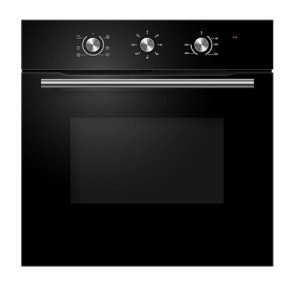The Integrated Oven: A Comprehensive Guide
In modern-day cooking areas, the pattern towards incorporating appliances with cabinetry to create a smooth appearance has actually gotten considerable traction. Amongst these essential kitchen tools, the integrated oven stands apart as a favored option for numerous homeowners and cooking enthusiasts. This short article checks out the benefits, features, and factors to consider associated with integrated ovens, in addition to answering typically asked concerns.
What is an Integrated Oven?
An integrated oven is a kind of built-in oven that is designed to be flush with kitchen cabinets. Unlike freestanding models, which typically stick out by themselves, integrated ovens are concealed or partly hid, supplying a sleek and cohesive aesthetic to the kitchen area. These ovens come in numerous styles, including single, double, and steam ovens, and can be integrated with racks and cabinets for boosted storage.
Advantages of Integrated Ovens
Incorporating an oven into your kitchen style can offer numerous benefits. Here are some advantages of choosing an integrated oven:
Space-saving Design:
- Perfect for smaller kitchen areas, integrated ovens maximize space usage, leaving more space for other appliances or storage.
Aesthetic Appeal:
- The flush installation develops a structured, modern-day look that can raise the overall ambiance of a kitchen.
Customizability:
- Integrated ovens can often be customized to match kitchen cabinetry or to include distinct features such as pull-out shelves.
Improved Functionality:
- Many integrated ovens come equipped with sophisticated cooking technology, such as wise programs and convection heating, improving cooking outcomes.
Increased Property Value:
- An integrated oven can boost the value of a home, interesting potential buyers who are interested in contemporary, well-appointed kitchens.
Picking the Right Integrated Oven
When picking an integrated oven, numerous factors must be considered to ensure that the model fits your cooking requirements and kitchen layout. Below are some essential factors to consider:
Size and Capacity:
- Check the measurements of your kitchen space. Ovens And Hobs from 60cm to 90cm in width, with capabilities varying based upon how many dishes you generally prepare.
Kind of Oven:
- Decide in between traditional, convection, and steam ovens. Convection ovens are popular for their even heat distribution, while steam ovens keep wetness for better-flavored dishes.
Functions:
- Look for functions that match your cooking style. Some performances to think about include:
- Self-cleaning alternatives
- Smart technology integration
- Multiple cooking modes
- Safety functions
Energy Efficiency:
- Opt for energy-efficient models that take in less electricity while offering high efficiency.
Budget plan:
- Integrated ovens can be found in numerous price ranges. Determine your spending plan while thinking about the longevity and durability of the home appliance.
| Function | Recommended Model | Description |
|---|---|---|
| Self-Cleaning Function | Yes | Saves time and effort keeping cleanliness |
| Convection Cooking | Yes | Enhances heat distribution for even cooking |
| Smart Technology | Optional | Permits control from mobile devices or voice assistant |
| Numerous Cooking Modes | Yes | Adaptability in cooking different dishes |
| Energy Rating | A/A+ | Ensures lower energy usage |
Setup and Maintenance of Integrated Ovens
Appropriate setup and maintenance are crucial for ideal oven efficiency. Here are some actions to think about:
Installation Steps
- Preparation: Ensure you have all the necessary tools and products before beginning the setup.
- Step the Custom Space: Confirm the fit of the oven versus the kitchen cabinetry.
- Link to Power Supply: Consult an electrician for safe electrical connections.
- Leveling: Ensure the oven is level to prevent cooking disparities.
- Attach Cabinet Panels: If required, attach ornamental panels for a customized look.
Upkeep Tips
- Routine Cleaning: Frequent cleansing avoids food buildup and makes sure the oven runs effectively.
- Check for Damage: Inspect the door seals and interior for indications of damage regularly.
- Service Regularly: Schedule expert maintenance to preserve effectiveness and performance levels.
- Follow Operating Instructions: Always follow maker standards for operation and upkeep.
Often Asked Questions (FAQs)
What is the difference in between a built-in oven and an integrated oven?
While both types are designed to suit kitchen cabinetry, built-in ovens can stand apart somewhat, while integrated ovens sit flush with surrounding cabinetry.
Are integrated ovens more pricey than traditional ovens?
Normally, integrated ovens can be more expensive due to the design and features that accommodate a seamless build into the kitchen.
Can I change my existing oven with an integrated oven?
Yes, however guarantee to think about the size and any adjustments needed for your cabinetry and kitchen layout.
For how long do integrated ovens usually last?
With correct upkeep, integrated ovens can last anywhere from 10 to 15 years or longer.
Do integrated ovens require special installation?
Integrated ovens frequently require expert setup to ensure they are fitted properly with appropriate connections and precaution.
Integrated ovens provide an advanced and effective service for modern-day cooking areas, enhancing aesthetic appeal while providing sophisticated cooking abilities. By carefully assessing functions, setup, and upkeep, house owners can choose an integrated oven that best suits their culinary requirements and design preferences. With the many designs and types readily available, anyone can achieve a functional space that matches their cooking way of life, making the integrated oven an exceptional financial investment for any home.

